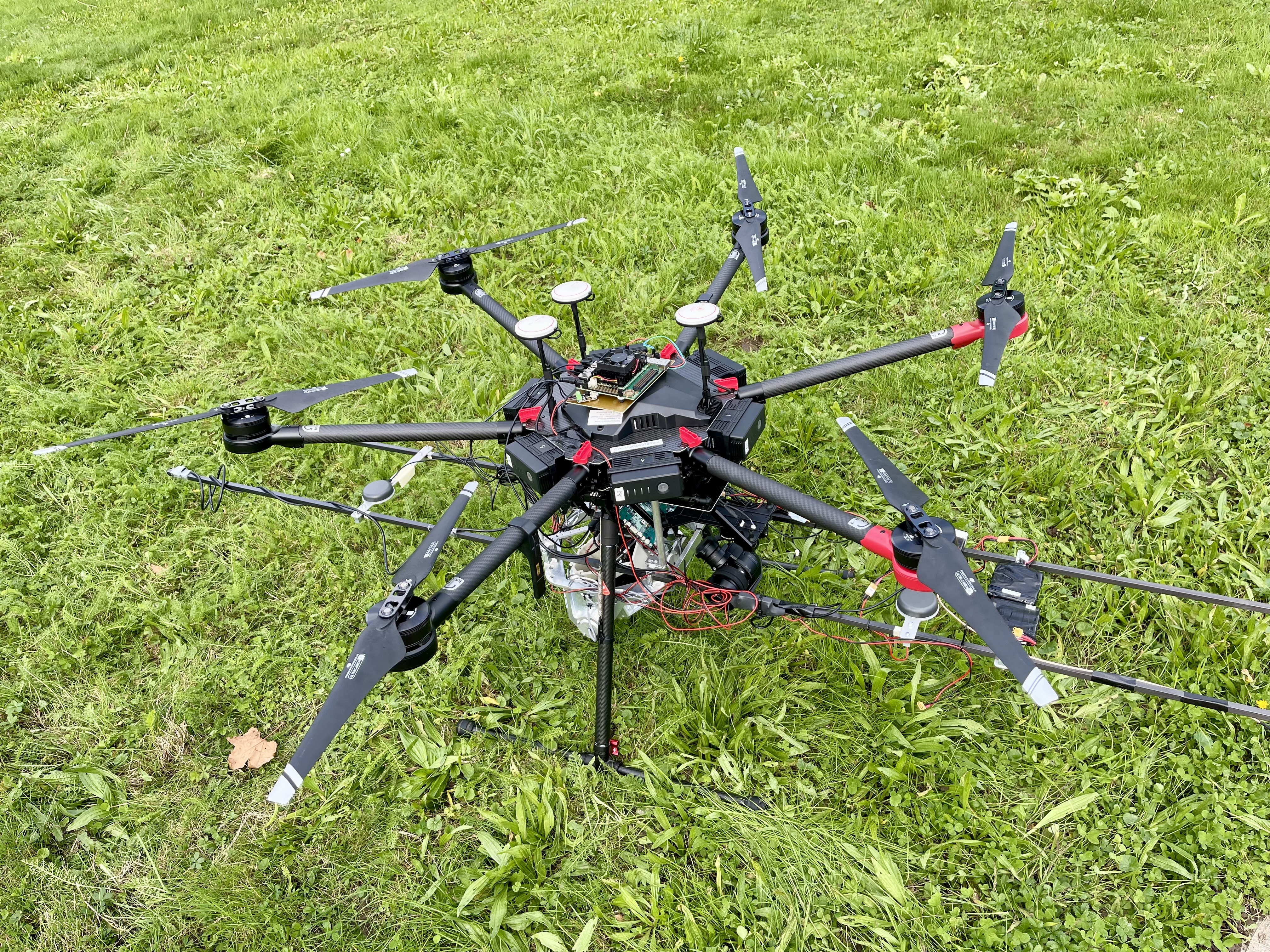QDrone – Simulation of Free-Space Quantum Communication Using Drones
Free-space optical communication (FSOC) is considered a key enabling technology for future quantum communication networks. To better understand the physical foundations of this technology, the FHNW, in collaboration with GA-Synopta, is developing a mobile drone platform that investigates atmospheric disturbances in the context of quantum communication – cost-efficient, flexible, and practice-oriented.
Background
With growing international interest in secure quantum communication systems, the study of atmospheric effects on optical transmission paths is gaining importance. Conventional test environments – such as ground stations with complex infrastructure – are often expensive and difficult to scale. In contrast, FHNW has developed high-precision drone technology with optical tracking (2-axis gimbal and MEMS mirrors), now being used for the first time to address this research question. Initial successful tests were conducted in cooperation with the Satellite Laser Ranging Observatory in Zimmerwald.
Objectives
The project investigates whether signal quality fluctuations caused by atmospheric effects – particularly scintillation – can be reliably quantified using targeted measurements and established turbulence models (Obukhov-Kolmogorov model). The focus lies on analyzing the structure parameter Cn² at a wavelength of 637 nm. The goal is to create a scalable platform capable of simulating real-world communication scenarios, which can be used to validate future satellite-based quantum communication systems.
Expected Outcomes
The project is expected to generate high-quality datasets for characterizing the impact of turbulence, along with model comparisons that will serve as a foundation for developing adaptive optics and robust quantum communication protocols. In addition, the FHNW drone platform will demonstrate its capabilities as a mobile test environment for FSOC systems.
QDrone will result in a flexible, scalable, and cost-efficient research platform (TRL 3–6) that can serve as a national and international reference for experimental quantum communication research. The results will directly support the further development of Swiss quantum infrastructure within the framework of the Swiss Quantum Initiative (SQI).
Project Information
Client | |
Execution | |
Duration | 1,5 years |
Funding | Swiss Quantum Initiative (SQI) |
Team | Prof. Dr. Christoph Wildfeuer (Project Lead), Alain Lavoyer, Timeo Jauslin |

